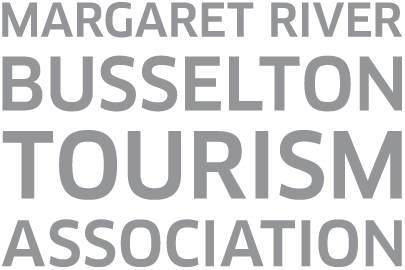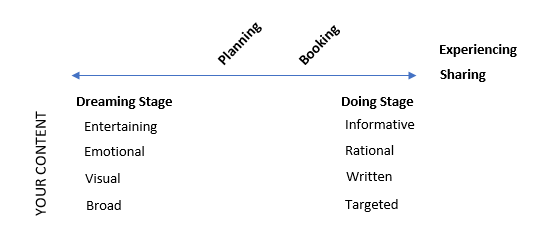
Check out these five rules for establishing a clear, effective and adaptable marketing plan for the digital age.
Those who were fortunate enough to catch Georgia Rickard’s Emergence Creative workshop Marketing in the Kardashian Age may already be actioning her five rules for an effective digital marketing strategy. But for those who missed it, this slightly abridged version could be the key you need to unlock a more effective marketing plan for 2018 and beyond. If you’re unfamiliar, Georgia is an award-winning editor (she turned Australian Traveller into the country’s fastest growing magazine in three years as editor), a journalist, content creator and all-round digital whizz. The tips she gave throughout her Emergence presentation were not only insightful, but also extremely practical – so think of this recap as an action plan, and get working on your future marketing plans.
Whether you’re a novice when it comes to digital or social media marketing, a complete pro or somewhere in between, you’ll find value in Georgia’s fresh and unique way of looking at age-old marketing techniques and how she applies them in a contemporary context. Beginners: this is a reminder that digital marketing still rests on many of the same principles as traditional marketing, it’s just a new way of presenting things. And pros, you’re sure to gain a different perspective on the things you already know, reinvigorating your approach. Here are five rules for establishing a clear, effective, and adaptable marketing plan that will keep you relevant in the digital marketing age.
1. Every Sale is a Story
What is distinct in the digital age is that there are far more publishers than there ever have been before – anyone with a smartphone is a publisher, with their very own growing network. This may seem like it makes the job of marketing your business effectively impossible – but quite the contrary. It actually empowers you to publish on your own behalf: to cut out third party advertisers, and to determine how you’re perceived in the market place more easily. But how, you might be asking, do you capitalise on this? Well, Georgia’s tips on this are threefold. First, she said that brand story is more important than ever, but that while our stories have to be compelling, they also have to be commercial – they have to speak to the consumer’s needs before those of the business. For example, while you might feel that the most important part of your brand’s story is your long history, consumer’s might be more interested in how you’re evolving, what your future looks like, and where they can see themselves in it.
Second, Georgia believes every business has a media network waiting to be activated. That might be your guests (do you add them to a mailing list that’s regularly communicated to?), the local community (are you appealing to locals in off-peak periods?) or are there member-based groups or networking opportunities that you could be making more of?
Finally, Georgia said that once you’ve identified your untapped network, it’s important not to interrupt what they’re interested in: you must become it. Vital to the success of effectively engaging and converting your network is to embody what they already love, by feeding them content that speaks to them. Allow consumer needs and wants to drive the evolution of your brand story.
2. Treat Every Consumer as a Potential Love Interest
It might sound funny, but digital and social media marketing really is a lot like dating. Not only are you constantly trying to attract people, you also have to be aware that once you’re in the relationship, the other person’s needs come first. It’s no different with a consumer. If you want to appeal to them, attract them to your business, convert them, and ultimately keep them coming back for more, you have to satisfy their needs. So, what does this look like in practise? When it comes to Facebook and Instagram, Georgia said it’s important to remember that people are there looking for micro-entertainment – not for ads for your product. Endless social media posts about your products or business news isn’t going to get you anywhere – what you need is content. If advertising is what you say about yourself, then content is what you say about others – that is, it’s material you put out there that speaks about things other than your business, and draws consumers in through providing value.
The good news is, this is actually a really non-threatening way to sell. If you’re running wine tours, posting original content about the ten best wineries in the region, that might happen to lead the reader to your website, is going to perform way better in the digital space than a Facebook post announcing a promotion this weekend. If this isn’t achievable for you, you should at least be closely following digital publishers who speak about your industry and your region frequently, so you can share and re-post their content. Georgia said that while people can baulk at the idea of content marketing, it’s actually very easy to target (via social media), very measurable and much easier to action than you might think.
3. Match Message to Mood
This one shouldn’t come as too much of a surprise to anyone – matching message to mood is a traditional marketing tactic, and the truth is, it’s actually easier than ever to achieve what with our ability to target people on the internet based on a huge variety of demographics and behaviours. Georgia said that your marketing strategy should follow the consumer through the purchase cycle, connecting with them at every stage throughout, starting from your inspirational brand message, through to the informational retail message at the booking and buying stage.
Looking at the five stages of the modern travel consumer journey, think about how your business might be able to speak to the consumer’s needs, and how you might adapt your messaging depending on which platform you’re using at what stage. Generally speaking, Georgia said that highly visual platforms like Instagram, YouTube and Pinterest are the most effective ways to speak to consumers early on in the journey, moving through to your website, which might have more written content about the region, your industry and your business, and finally on to electronic direct messaging (email marketing) that is informative and encourages purchasing.
But don’t forget that the journey with that consumer isn’t over once they’ve purchased your product. You want them to share their experience with the world, and they’ll only do that if you’ve made it easy for them. That means having your social media handles and hashtags displayed clearly, encouraging people to share photos and leave reviews and ensuring your customers have access to WiFi while they’re experiencing your product (or at least immediately after)! They’re all publishers, remember, and they’re in a hurry to make their digital friends jealous.
4. Mimic the Media
Another fun fact about marketing in the digital age: the scarcest resource is fast becoming human attention. While once space for marketing on the internet was competed for, it is now almost limitless, and it’s cutting through to gain attention that’s the hard part. So, how do you? Georgia said that taking cues from the media is a great place to start; if they’re still using a certain technique or posting a certain form of content, that means it’s still relevant and still performing well. Looking around at the moment, that means micro-news, clickable (but not click-baity) headlines, GIFs, Emojis, abbreviations and highly visual, trending ‘nugget’ news or galleries to grab your audience’s attention. Once you’ve drawn the consumer in, then comes the more long-form content. Above all, Georgia advised considering the overall message that your marketing channels are putting out there. These days, the most successful businesses are those that look more like a media or entertainment outlet than anything else at first glance. If you look at your Instagram feed and it looks more like a community noticeboard than an inspirational mood-board, you probably need to make some changes. Similarly, if your website is full of information about your business rather than full of content about things that are already of interest to potential consumers, it’s time to make a change. A great example of this in action is that of Marriot Hotels, who’ve practically become a content production studio despite actually operating as a hotel chain, or Qantas, who’ve established themselves as a trusted voice that consumers look to for travel inspo… and probably end up booking their flights with, too.
5. Start Small
Just as Georgia said to her audience at the end of the 90minute workshop, we know this can be a lot to digest. But if you aim to start small, you’ll be surprised how actionable each of these tips are, and working them into your marketing strategy at the very earliest stages will make things easier in the long run. First things first, Georgia said the importance of having a written strategy cannot be overstated. It sounds simple, but it’s an absolute necessity. It doesn’t have to be complicated, long-winded or even look nice – just have it documented in a way that’s conducive of actual implementation. Georgia suggested basing your marketing plan on three quite simple questions: What do you want to achieve? How will you measure it? And how will you amplify it?
While you’re at it, establish a marketing calendar, too. This should be populated with not only your business’ milestones and important dates, but those of the industry and community you’re a part of, and those dates that are of significance to the broader public as well. A bit of forethought will mean you’re more able to capitalise on topics that are in the public imagination at certain points throughout the year; like a blog about great breakfast cafes in the region before Mother’s Day, that might have little to do with your product, but will lead people to your website, and make them want to stay in touch for more great content.
Secondly, Georgia said that having clear guidelines for your content from the outset will help you to develop a consistent message that’s aligned with your business goals. As part of this, you need to know what you want your various digital and social channels to look like, the topics they’ll speak about, and the kind of images they’ll post. An easy way of starting, Georgia said, is giving your Facebook, blog, or Instagram a personality. For example, if you’re an accommodation provider, your Instagram might adopt the persona of Sandy, who likes to talk about spending quality time with family, great places to eat and drink, and the beautiful Indian Ocean. Use this to guide the way you speak to consumers. And keep in mind, not every piece of content you post has to be original – get on Pinterest and start collecting images that you can share on your Instagram or find accounts that you love and repost their content (just remember to credit the image where possible)!
Thirdly, it’s important that your marketing plan is multi-functional. According to Georgia, that means you’re considering more than just what you can do yourself – you’re thinking about working with micro-influencers, looking for ways to amplify your digital voice (such as tagging in your LTO’s and RTO’s when you post on socials!) and aiming to reach media where possible.
Finally, Georgia left us with a piece of advice given to her by someone who climbed Mount Everest, that applies quite nicely to those of us who might think we’re at a loss when it comes to marketing in the digital age. It was, quite simply, to spend five minutes more with your discomfort – every time you’re considering a post on social media, or a blog piece, or even a paid advertisement, spend five minutes more than you might normally, thinking carefully about your consumer’s needs and their journey. You might find this is all you need to do to totally re-frame the way you think about digital marketing, and start seeing serious improvement in how effectively you engage consumers.


